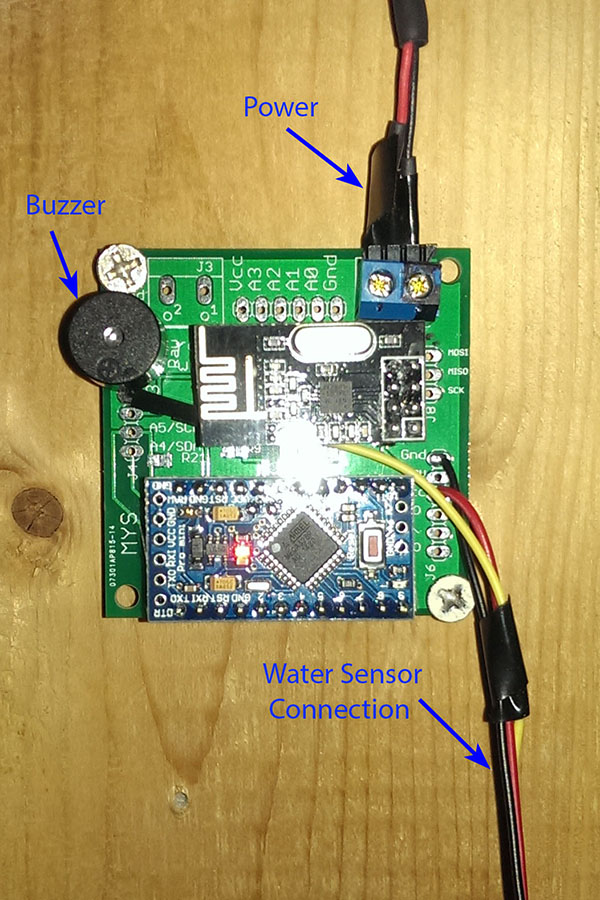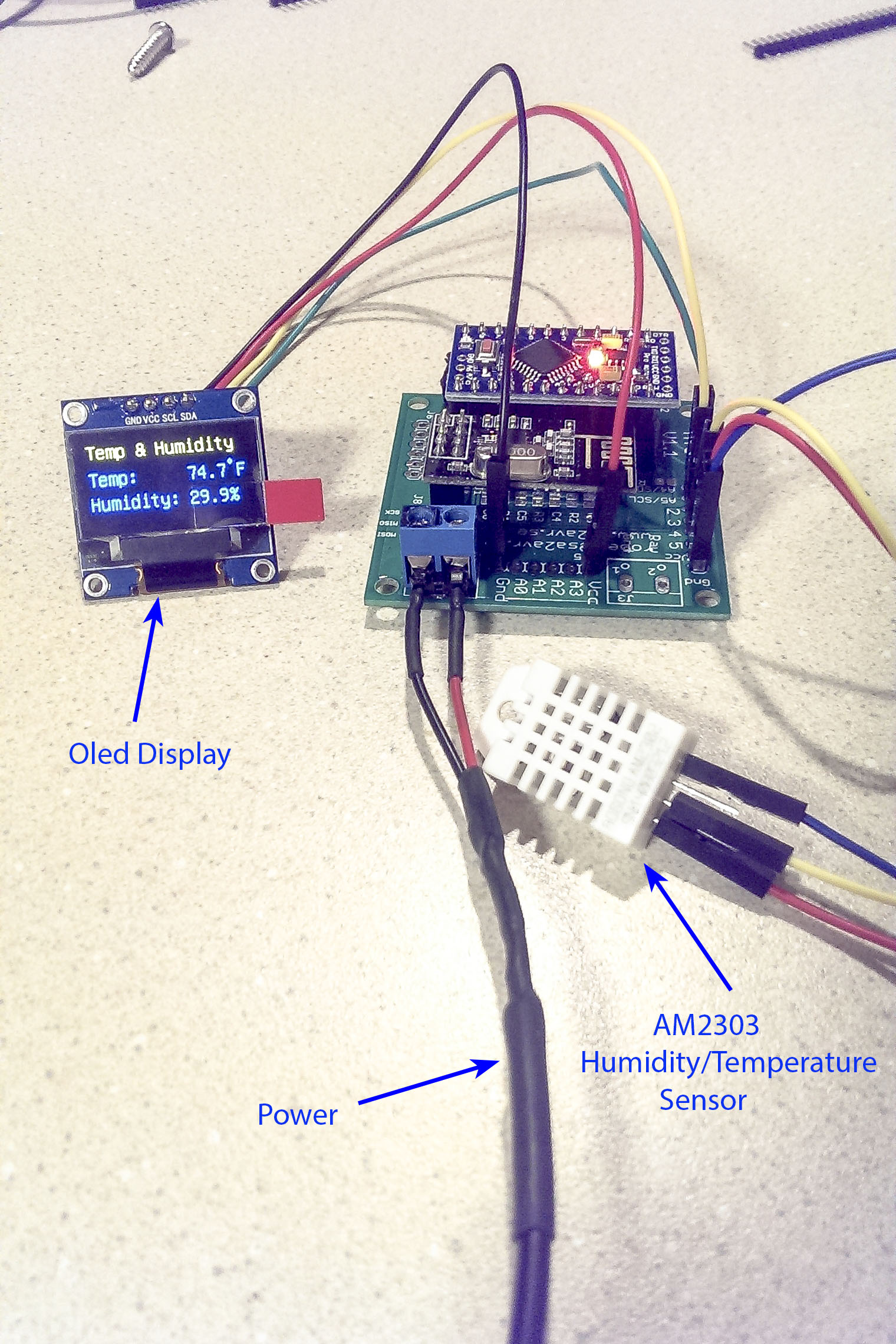My sensorboard MYS 1.0beta
-
Here are 2 pix of sensors I built using the boards.


The first is a water sensor/alarm which in addition to triggering the Vera controller, will activate a buzzer as a warning of a water leak in the basement water heater/furnace area.
The second is a standard temp/humidity sensor augmented with an Oled display readout. The display and sensor are temporarily hooked up until I decide where/how to mount them.
-
Hi,
I ordered and received 5 kits' and am very happy to have them as last time I spent about 4 hr's soldering on to a prefboard.
But given that I'm nearly a total newbie to electronics I am finding following the assembly instructions nearly impossible.
Any chance somebody did a series of pictures while assembling that they can share? Or maybe a video of the process?
Thanks in advance
Joey -
@Joey-Edelstein I will try to update the instruction with pictures as soon as possible.
-
@Mrlynx thanks that will be a big help.
-
@Mrlynx, last Saturday I received the 5 kits ordered from your web site, thanks! Nice simple board, and very flexible for different applications. Have assembled my first sensor using it and works perfectly. Don't miss all the wires it replaces. Although the 805 components are small, I prefer them to thru-hole. Again, thank you, and nice job! Love MySensors and the great community of support.
-
@Joey-Edelstein , Here is what I did for assembly: Do not begin assembling the board until deciding on what the node is and selecting all parts - not all parts are needed. My first node is a DS18B20 temp sensor. 1) I wanted sockets for the radio and arduino so cut and put in pile of parts to be used. 2) I know I need D3 for the DS18B20, so I cut header for J4. Also need pull up resister for same, so look at the schematic for the board and you see R14 is the pull-up for D3. Put the resister in the pile of parts. 3) I also am battery powering the board, and want to measure it thru A0. So I cut header for J5. Also need a V divider, so looking at the schematic can do that with resisters on R12 & R4. Also need a small capacitor on C6. Put these parts on the pile. Collect all needed parts. Don't need header on J6 for example, not using it. 4) Also soldered the power cap on C2 - did not need the volt regulator supplied in the kit as I am feeding 3.3V directly to J7. Then solder the smallest components first starting with those closest to the center of the board, and moving out. Then the big components such as the sockets, again start at the center of the board and move out. Depending on your application, only use components needed. Look at the schematic. Hope this helps get you started.
-
@novicit thanks for tips but my problem is I don't really know what all the parts in the kit are. I really need some pictures or video guidance...
-
@Joey-Edelstein
Now the instruction page is update with some photos. -
@jesper Send me an email on robert@sa2avr.se
-
MYS 1.1 pcb has now got a lower price.
If you by 5 or more boards the price is 2$ / board.
http://www.sa2avr.se/mys-1-1/ -
MYS 1.1 pcb has now got a lower price.
If you by 5 or more boards the price is 2$ / board.
http://www.sa2avr.se/mys-1-1/ -
@pboye look at http://www.sa2avr.se/mys-1-1/ under parts list.
-
@pboye look at http://www.sa2avr.se/mys-1-1/ under parts list.
-
It all depends on what sensor or actuator you are going to connect.
I chose a basic assortment of resistors to get you started and be able to build all examples on www.mysensors.org.
As this question have come up before am I going to write down some examples on http://www.sa2avr.se -
Very useful PCB.
Had a question before placing the order for the pcb.
What is the pitch for the male/female headers and the screw terminals ?
Is it 2.54 mm (0.1") for header and 5.08 mm (0.2") for terminals ?
Thanks
